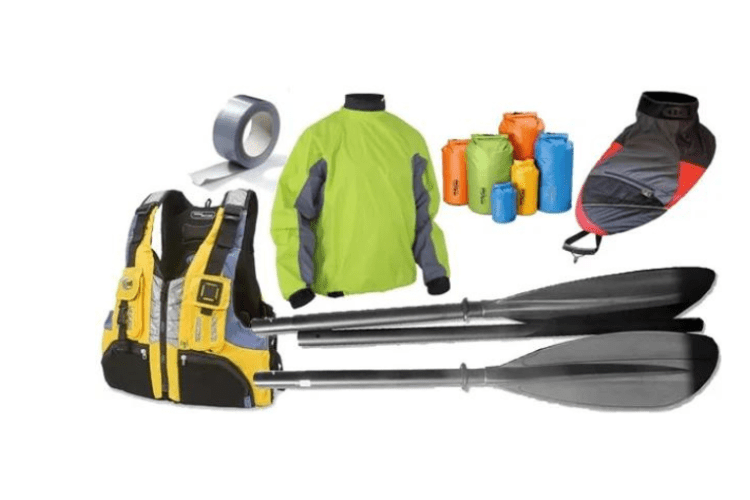Types of Trampolines: Spring vs. Springless, Round vs. Rectangular
“Life is all about balance, just like jumping on a trampoline.”
Welcome back! In this blog I will talk about types of trampolines.
Trampolines are really popular toys that lots of people like to play on. They’re popular because they’re fun and they help you stay healthy by making you move around.

When you jump on a trampoline, it feels super exciting, like flying a little bit. So, people like them because they’re fun and they keep you healthy.
Some trampolines have springs under them. Others use bands or rods instead. Many trampolines are round and good for playing. Others are rectangular and better for sports.
You will learn how to stay safe on them, how to take care of them, and why they’re good for exercise. I’ll also compare different types of trampolines to help you pick the right one.
Spring Trampolines
Explore the classic choice of trampolines: spring trampolines. Learn how these traditional favorites work and weigh their bounce quality against safety considerations and maintenance requirements.
Explanation of traditional spring trampolines
Imagine the trampolines you usually see in backyards, with metal springs around the edges. These are spring trampolines. When you jump on them, the springs help you bounce up and down.
Description of how springs function in these trampolines
The springs are like big, stretchy coils. When you jump on the trampoline, these springs stretch out and then quickly snap back into place, pushing you up into the air. They’re like little helpers that give you that fun bounce.
Advantages of spring trampolines
Bounce quality: These trampolines give you a nice, even bounce every time you jump. It feels smooth and predictable.
Availability and affordability: You can find spring trampolines in many stores, and they come in different sizes to fit different budgets. So, they’re pretty easy to get your hands on without spending too much money.
Disadvantages of spring trampolines
Safety concerns: Sometimes, the metal springs can be a bit risky. If you’re not careful, you could accidentally pinch your fingers or toes in them, or your clothes might get caught.
Maintenance requirements: To keep a spring trampoline safe and working well, you need to check it regularly.
This means making sure the springs are in good condition, the frame is sturdy, and there are no broken parts.
It’s important to do this to prevent accidents and make sure the trampoline lasts a long time.
Springless Trampolines
Springless trampolines are a new kind of trampoline that doesn’t use metal springs like the old ones. Instead, they use different stuff to help you bounce.
Instead of metal springs, springless trampolines might use things like stretchy bungee cords, elastic bands, or strong rods to make you bounce. These things work like springs but without the metal.
Advantages of springless trampolines
Enhanced safety features: Springless trampolines are safer because there are no metal springs to hurt you. So, you can jump without worrying about getting pinched.
Reduced maintenance: Since springless trampolines don’t have as many parts, they’re easier to take care of. You don’t have to check them as often or fix them as much.
Disadvantages of springless trampolines
Cost considerations: Springless trampolines can be more expensive to buy because they use fancier technology and materials.
Bounce experience compared to spring trampolines: Some people might feel that bouncing on a springless trampoline is a bit different from bouncing on a regular one. It’s a matter of personal preference.
Round Trampolines
Round trampolines are the ones you usually see in people’s backyards. They’re called “round” because they’re shaped like a circle. Many people like them because they’re simple and easy to find.
Advantages of round trampolines
Wide availability: You can find round trampolines in lots of stores and online. They’re everywhere, so it’s easy to get one.
Balanced bounce: When you jump on a round trampoline, the bounce feels the same all over. It’s like jumping in the middle or on the edges; it’s consistent and fun for everyone.
Disadvantages of round trampolines
Limited space efficiency: Round trampolines take up more room in your yard because they’re round. If you have a small yard, it might be hard to fit one.
Less suitable for advanced gymnastics or multiple users: If you’re really good at gymnastics or if lots of people want to jump at the same time, round trampolines might not be the best choice. They’re better for casual bouncing.
Rectangular Trampolines
Imagine a trampoline that looks like a big rectangle instead of a circle. That’s a rectangular trampoline. It’s different from the ones you usually see in your neighbor’s backyard.
Advantages of rectangular trampolines
Superior bounce for gymnastics and tricks: If you’re really good at doing flips or gymnastics moves, a rectangular trampoline is perfect. It gives you more control and a stronger bounce, so you can do cooler tricks safely.
Space efficiency, especially for larger models: Even though they’re big, rectangular trampolines fit better in yards because they use space smarter. This means you get more jumping space without taking up too much room.
Disadvantages of rectangular trampolines
Higher cost compared to round trampolines: Rectangular trampolines are usually more expensive than the round ones. This is because of their special design and features, so they might not be as affordable for everyone.
Less common in the market: You might not see rectangular trampolines as much as the round ones. They’re not as easy to find in stores, so you might have fewer options when you’re looking to buy one.
Factors to Consider When Choosing a Trampoline
Thinking about these things, you can choose a trampoline that’s safe and fun for everyone.
Available space and location considerations
Think about how much room you have in your yard or where you want to put the trampoline. Make sure there’s enough space for it to fit safely and that it’s away from anything like trees or fences.
Budget constraints
Decide how much money you can spend on a trampoline. Remember, it’s not just about the cost upfront.
You also need to think about things like maintenance and extra stuff you might need.
Intended use
Decide who will be using the trampoline and what they’ll be doing on it. Some trampolines are better for just bouncing around, while others are made for things like gymnastics or exercise.
Safety features and considerations
Make sure the trampoline has things to keep you safe, like nets around the edges or padding on the springs.
It’s important to check if it meets safety standards to avoid accidents.
Maintenance requirements
Think about how much work you’re willing to put into keeping the trampoline in good shape. Some might need regular checks or cleaning, so make sure you’re okay with that.
User preferences and experience level
Consider what the people who will be using the trampoline like and how much they know about bouncing.
Some might prefer a certain type of bounce or shape, so it’s good to keep that in mind.
Conclusion
I talked about different types of trampolines, like spring and springless ones, as well as round and rectangular shapes.
Each type has its pros and cons, which I explored to help you understand what might work best for you.
When picking a trampoline, think about things like how much space you have, your budget, what you’ll use it for, and what safety features are important to you. Considering these factors will help you make a smart choice that you’ll enjoy.
Trampolines are lots of fun, but safety is super important too. Always follow safety rules and make sure to have fun responsibly.
FAQs
Trampolines are fun and good for your health because they make you move around. When you jump on one, it feels like you're flying a little bit.
Spring trampolines give you a nice bounce, they're easy to find, and they don't cost too much. But sometimes the springs can be a bit dangerous, and you need to take care of them.
Springless trampolines are safer because they don't have metal springs. They might cost more, but they're easier to take care of.
You should consider how much space you have, how much money you can spend, what you'll use it for, how safe it is, and how much work it takes to keep it in good shape.


